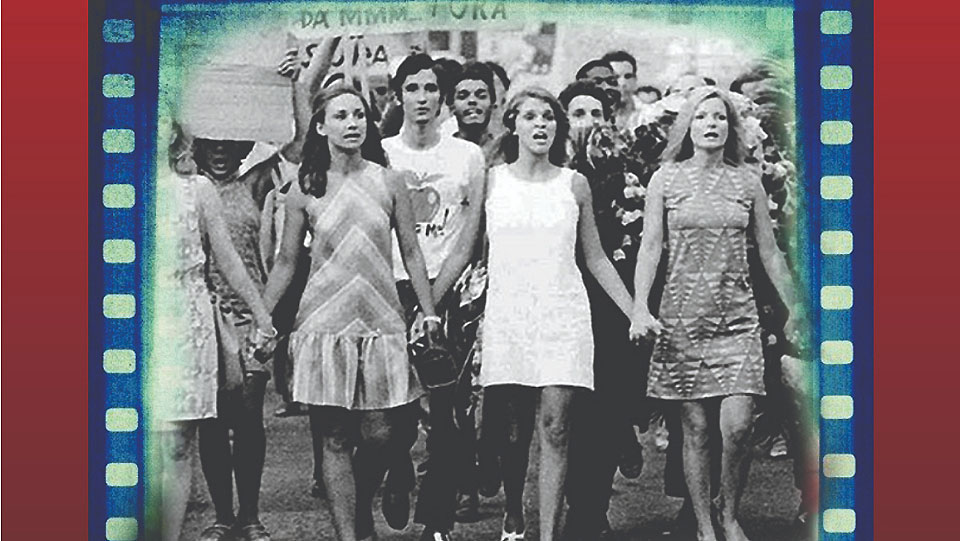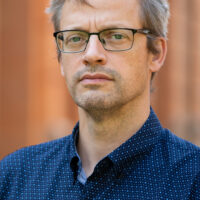
The illusion of a constant present hides how most of our lives are experienced through memory. The physical imminence of the present—the sensation of concreteness, odors, sounds, vividness of sight, or tastes of the objectivity of the immediate now—continuously slips into memory. Still, memory may haunt the present, rendering it painful with an overwhelming sense of loss, despair of failure or falling short of goals, or perhaps with the emotions of nostalgia over missing loved ones, a favorite café, or homesickness for an old neighborhood that housed the milestones of youth. The struggle to withstand the perceived motion of time through the creation of a narrative that restores memories of human companions and yesterday’s vitality into the present is the subject of Urariano Mota’s semi-autobiographical novel, Never-Ending Youth.
Based on real people or composites of real people, Mota’s work offers snapshots of 1970s Brazil’s radical youth movement. It chronicles the students’ anti-fascist struggle in Recife, in the northeastern state of Pernambuco, during the dictatorship which, with U.S. backing, had overthrown the democratically elected government and came to be ruled by generals for two decades. As part of the story about these few years in the lives of a handful of young people, Mota’s novel also invokes a larger global context rooted in the European slave trade, colonialism, race and patriarchy. The book explores themes of male supremacy and racism and the significant changes in how people of the left understood these long enduring systems in their analysis of class struggle. Mota’s book restores the personalities, actions, and idiosyncrasies of the men and women who fought the repressive dictatorship.

They drew inspiration from ongoing anti-imperialist movements led by Fidel Castro, Che Guevara, Ho Chi Minh, and Mao Zedong. The vibrant music, poetry, and fiction comprising Brazilian arts and culture served as a constant reference point for their emotions, ideas, and relation to their history and future. Manuel Bandeira, Jorge Amado, Waldick Soriano, Solano Trindade, Alfredo da Rocha Filho, Vinícius de Moraes, and Paulo Freire are the philosophers, activists, singers, and writers who shape the atmosphere, ideas, and words of this radical world. Beyond those boundaries, Don Quixote, the works of Marcel Proust and Gabriel García Márquez, the poetry of Goethe and Lorca, Marx’s dialectics, and Mao Zedong thought, even the vocal renderings of Ella Fitzgerald, inhabit the deliberations and debates of our heroes and heroines.
Indeed, Mota’s narrative constructs imaginative bridges to the historical past through cultural connections, the lived past through memories of political struggle, and the present and future. This philosophical sense of transcendent collectivity, of an identity with other humans and strugglers for liberation, with the creators of life, ideas, and the world itself, rises over the present of the alienated individual under repressive capitalism. The death and funeral of his close friend Luiz do Carmo, whom the narrator-protagonist describes as “my Sancho Panza,” motivates the writing of the book. He attempts to reconstruct a narrative of the memories of his youth, his friends, close comrades, and fellow travelers.
Júlio first met Luiz when the student organization tasked him with hiding Luiz. The latter had been labeled a terrorist by the regime for distributing pro-democracy literature. Júlio is enthusiastic about being able to help the movement, but completely embarrassed and ashamed of his poverty. His home is a tiny, overheated one-room cubby hole at the top of a boarding house. He doesn’t have enough money to feed the two of them adequately and relies on the generous housekeeper of the boarding house who understands his situation and gives him larger helpings.
His desire to tell a story about the richness of Luiz’s life and his role in the struggle against the dictatorship invokes memories of others: Zacarelli, Selene, Gordo, Célio, Lucas, Tonhão, Zé Batráquio, Joana, Antônio, Nelinha, and Vargas. The novel is made up of several dozen short episodes with developed characterizations of each. These youngsters are flawed, obsessed with sex and alcohol and music, imperfect in their politics, displaying anarchistic tendencies, male chauvinism, or reformist orientations. Still, in perfect and indelible ways, they made the main period of the novel’s chronology (1969-1973) what it was. Júlio, the narrator-protagonist, says that this time and place was not utopian or an era to which he would want to return. It was not the most beautiful time. It was marked by the terrorism and torture of the regime. But it was ours, and we, together, made it good.
Above all, it lives on: “our world is not dead.” While the fascists create a false image of the world that reflects their values, brutality, and their culture of death and hate, the revolutionary struggle for democracy and socialism fights for life and the future. Júlio observes that despite the limits posed by the dictatorship on freedom, the students and the strugglers were “the agents of their time.” Their decision to struggle against oppression and fascism was an essential ingredient that made that time worthwhile. As a chronicler of the moment and culture of the struggle, Júlio tasks himself with the creation of a text, a narrative that will bridge memory with the newly emerging and dynamic present. A text is something, he believes, that will outlive the moment, that will recuperate the past that survives only as a memory.
As Júlio leaves Luiz’s funeral, he contemplates the pain felt at the memories of his loved ones, his siblings in struggle, and his comrades lost both to the dictatorship’s brutality and to time. He sees a mass protest of teachers and students marching through the city demanding better pay and resources for the public schools. He signs the petition and calls forth his past comrades. “The young people are continuing to do what we did.” The new generation of young strugglers also awaits their chroniclers who will extend their lives beyond the moment. The cycle of generations, of struggles for democracy and justice, and the difference and continuity across time in the service of collective human liberation, join together to comprise our never-ending youth.
Editor’s Note: People’s World welcomes this second critical review of Mota’s novel. An earlier review by Piers Armstrong was published in October 2022. In addition, the translator explains here how he initially came to this project. And “Open Your Window,” a chapter from the book, can be read here.
Never-Ending Youth
Urariano Mota
Translated from Portuguese by Peter Lownds
New York: International Publishers, 2022, 232 pp.
ISBN 978-0717800063
Order here from International Publishers.
We hope you appreciated this article. At People’s World, we believe news and information should be free and accessible to all, but we need your help. Our journalism is free of corporate influence and paywalls because we are totally reader-supported. Only you, our readers and supporters, make this possible. If you enjoy reading People’s World and the stories we bring you, please support our work by donating or becoming a monthly sustainer today. Thank you!










